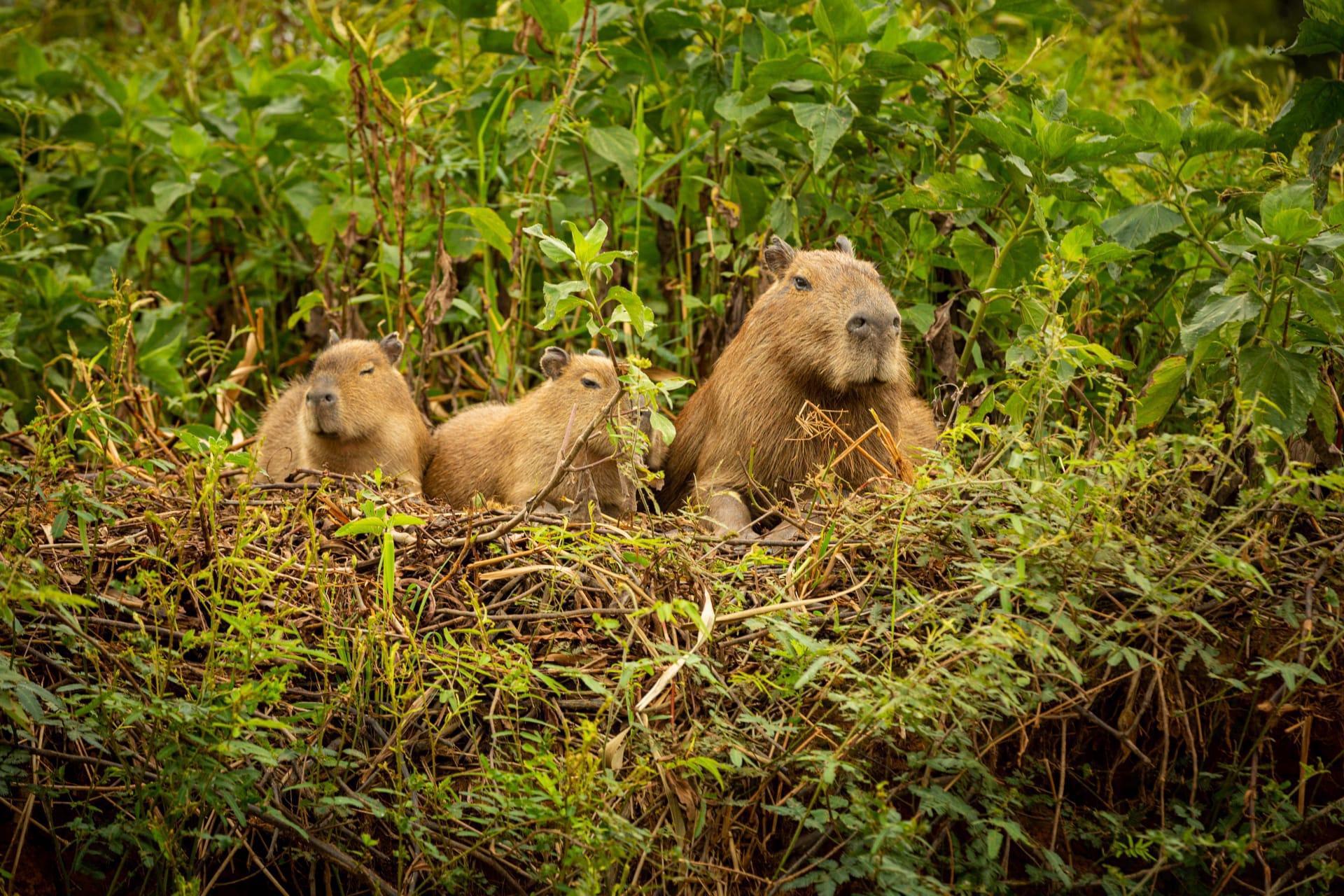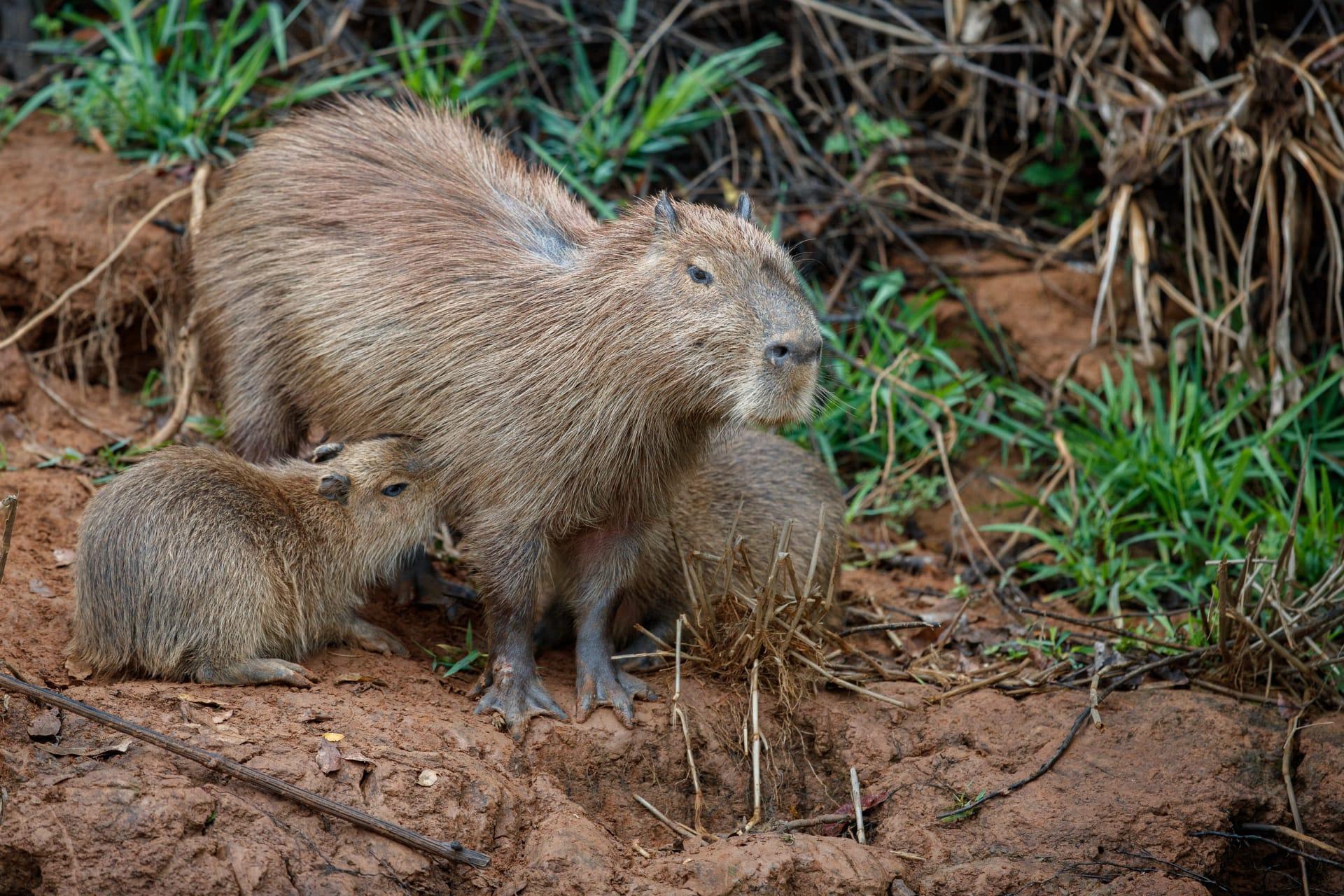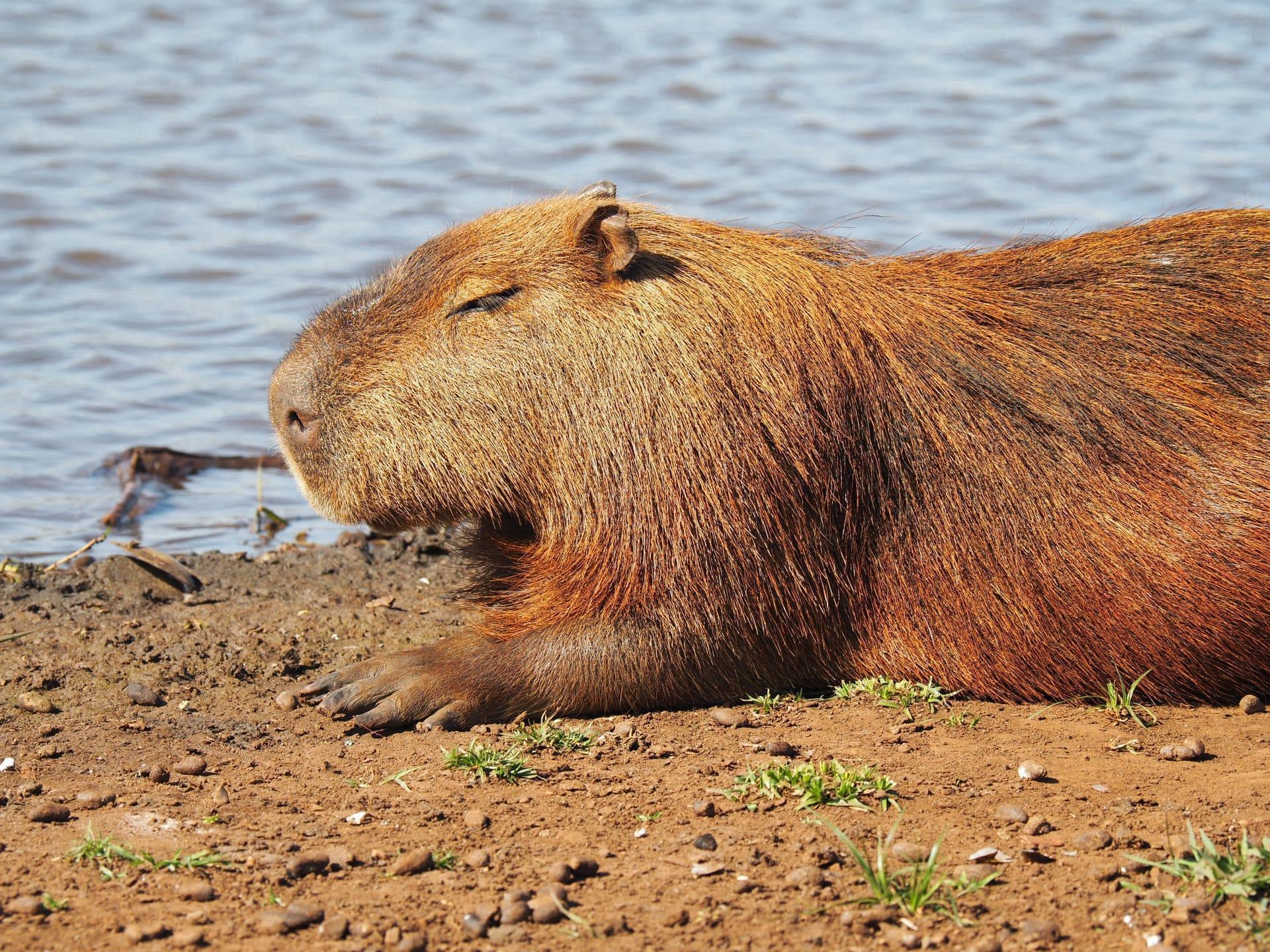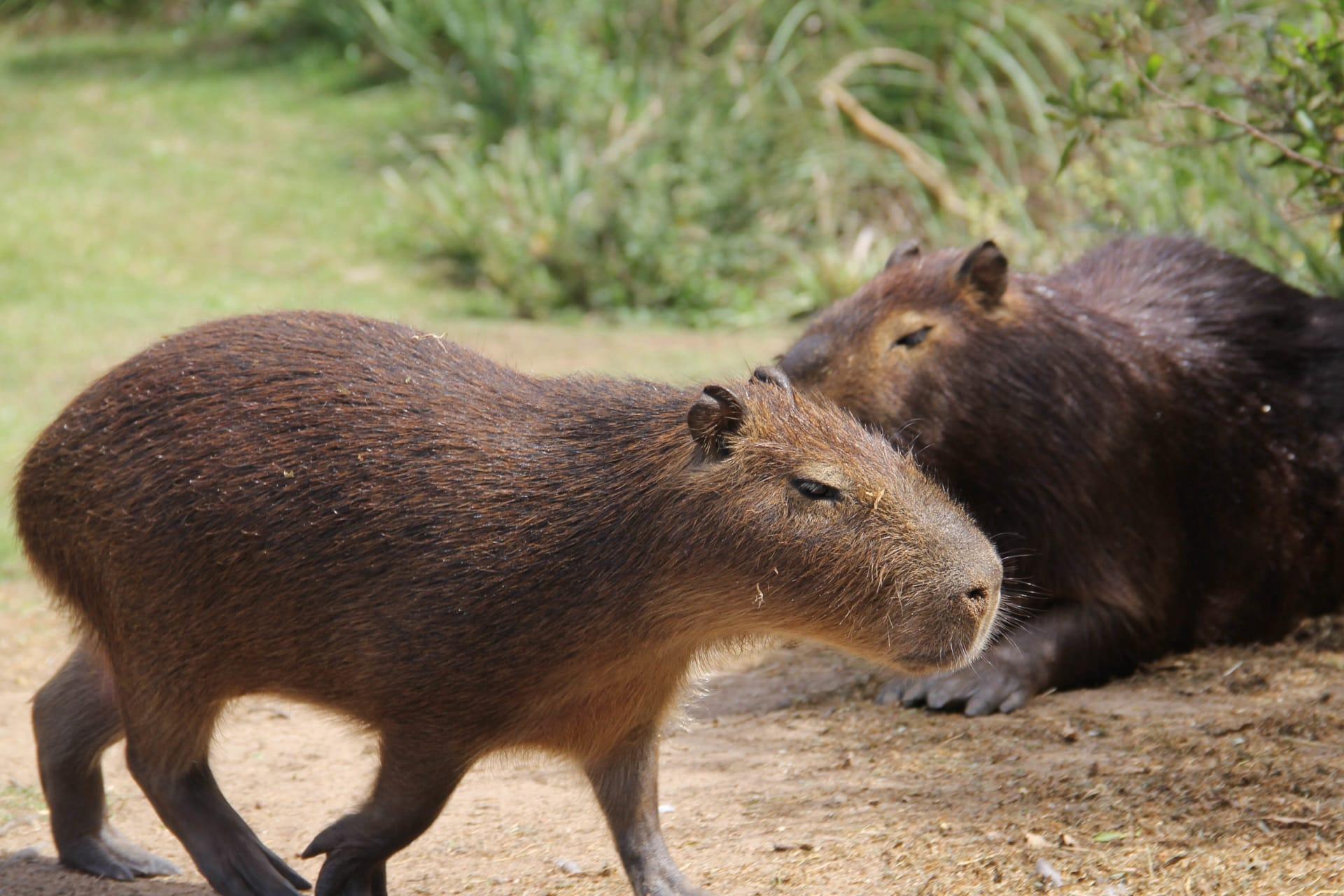1
The capybara, known scientifically as Hydrochoerus hydrochaeris, is the largest rodent in the world. On average, an adult capybara weighs between 35 to 66 kilograms (77 to 146 pounds) and can measure up to 134 centimeters (4.4 feet) in length. Not just their size is impressive; capybaras have a unique dental feature. Their teeth never stop growing throughout their lives. This continuous growth is necessary because their diet, mainly consisting of grass, wears their teeth down rapidly.
Capybaras are semi-aquatic mammals found across South America in regions like Venezuela, Colombia, Brazil, Argentina, and Paraguay. They are excellent swimmers and can remain submerged underwater for up to 5 minutes. This skill is not just for finding food but also a defense mechanism against predators. When threatened, capybaras can dive and hide underwater, using their nostrils, eyes, and ears which are positioned high on their heads to stay alert while keeping most of their body concealed.

2
Social interaction is a significant aspect of capybara life. These animals live in groups, typically consisting of 10 to 20 members, but sometimes they form much larger groups of up to 100 individuals. The social structure is fascinating; it's not just about safety in numbers. Group living helps capybaras maintain complex social bonds and hierarchies, which are crucial for mating and raising young. Within these groups, communication is key. They use a variety of vocalizations, from barks to whistles, to communicate with each other, especially when signaling danger or during social interactions.
Another intriguing aspect of capybaras is their role in their ecosystem as a "keystone species." This term refers to a species that has a disproportionately large effect on its environment relative to its abundance. Capybaras affect the growth and distribution of aquatic plants and grasses through their grazing habits. They also serve as a crucial food source for various predators, including jaguars, caimans, and anacondas. Their presence or absence can significantly impact the ecological balance in their habitats.

3
Capybaras have a unique adaptation for an herbivorous diet: they practice coprophagy, which means they eat their own feces. This might sound unappetizing, but it's a crucial behavior for their digestive system. By doing this, they can re-digest the cellulose from the plants they eat, allowing them to extract additional nutrients that were not absorbed during the first digestion. This process is especially important for maintaining their health and energy levels.
Despite their large size, capybaras are surprisingly agile. They are not just skilled swimmers but also fast runners on land. They can reach speeds up to 35 kilometers per hour (22 miles per hour) when running. This speed is essential for escaping predators. Besides, their webbed feet, not only aid in swimming but also provide stability on muddy and marshy ground, making them adept at maneuvering through their wetland habitats.

4
Capybaras have a unique thermoregulation method. They don't sweat like humans to cool down. Instead, they use water and mud. They spend a considerable amount of time in water or mud to keep their body temperature regulated. This behavior also helps protect them from sunburn and parasites, such as ticks. Their fur is specially adapted to dry quickly after they emerge from the water, preventing them from getting cold.
Reproduction and parenting are interesting aspects of capybara life. Females have a gestation period of about 150 days and usually give birth to 4 to 5 pups, although litters can range from 1 to 8 pups. What's fascinating is that capybaras are communal breeders. This means that not only the mother but also other females in the group help take care of the young. This cooperative care includes nursing, watching over the pups, and teaching them essential survival skills, making it a collective effort to ensure the next generation's survival.

5
Capybaras have a significant cultural impact in some South American regions. In Venezuela, they are called "chigüire" and are closely associated with Easter traditions. Due to a historical quirk in the Catholic Church's dietary rules, capybara meat is often consumed during Lent, where the faithful abstain from eating meat on Fridays. The church classified the capybara as fish, a decision influenced by the animal's semi-aquatic nature, allowing it to be eaten during this period.
Capybaras are known for their surprisingly peaceful and calm demeanor, which has made them popular in zoos and wildlife parks. They are often seen interacting gently with other animals, including those of different species. This harmonious behavior has led to numerous adorable photographs and videos circulating on the internet, showing capybaras peacefully coexisting with birds, monkeys, and even crocodiles, reinforcing their reputation as one of the most sociable and easygoing creatures in the animal kingdom.